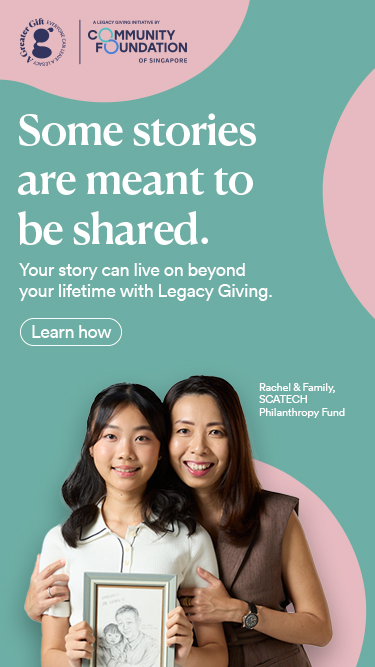Make Your Donations More Impactful


Donating to a worthy cause seems easy. Many people simply give to a charity that asks, give where they gave before or talk with friends. By being more strategic with your money, though, you can make sure your donation has more impact, regardless of whether it is small or large.
Strategic Giving
It is indeed easy to give to charities that you know or that friends recommend. Ad hoc donations without doing a bit of research and deciding on your strategic purpose may, though, have less impact or not fully align with your values
Starting with a clear giving strategy can enhance the impact of your giving, the Singapore EDB observes. It is better to clarify your goals before considering any donation by considering what you want to change, how much effort you want to put in, the amount you wish to give and the means you have to achieve them. “While data, best practices and tools are available, philanthropy is inherently personal and driven by passions and interests.
Along with giving to causes you support, it is important to ensure that the organization you donate to is reputable. “Better Ask, Better Check, Give Better,” the Charity Portal suggests. You can ask for details such as how your donation will be used, who the beneficiaries are and how much of your donation goes to the beneficiary. Not being able to get this basic information may be a red flag. You can also verify that the beneficiary is a registered charity or provides information to the Commissioner of Charities.
If you need advice, a variety of organizations can assist. Asia Community Foundation, for instance, says it provides donors with support and expertise to make confident and purposeful giving decisions.
Finding the Right Organization for your Philanthropy
One easy way to find reputable organizations to donate to is to use giving.sg, part of the National Volunteer & Philanthropy Centre (NVPC), lists more than 500 non-profits and categorizes them into “causes”. You can select the type of organization, look for ones in that category, click on ones of interest to “learn more,” and donate directly once you have found an impactful organization that aligns with your goals. You can usually also receive a tax benefit.
An alternative for people who want to make a larger donation is to set up a Donor Advised Fund (DAF). You can establish a fund with a donation and use the money to make future gifts to charities. Along with the administrative services that the manager provides, you can get a tax donation for your donation even though you’ll actually give funds to charities later.
The first DAF manager in Singapore and perhaps the most easily accessible one is the Community Foundation of Singapore (CFS), established in 2008. At CFS, said CEO Catherine Loh, “we aim to inspire and enable strategic philanthropy.” Donors can enjoy an upfront tax deduction when they make their contribution and disburse grants over time. CFS takes care of the administrative work, and it provides advisory and grant-making services. “We work with the donors to understand their philanthropic goals,” Loh said “and help them achieve their objectives. As needs become more complex, we aspire to help our donors to make the leap from ad hoc reactive charitable giving to strategic philanthropy which has clear goals and evidence-informed plans and attempts to tackle the roots of complex problems.” CFS scans Singapore’s charity sector to find worthy programs to fund, conducts due diligence and helps donors disburse grants to charities, social enterprises or ground-up groups.
Measure the Impact
To ensure your donation has the intended impact, it is important to assess the results of what the charity actually does. You can do it yourself, or a DAF such as CFS can help with impact measurement.
The Tan Chin Tuan Foundation, one of the early movers in impact measurement, provides insights on what to measure. It explains that a donation is a social investment, and each donation should generate a social return in order to be effective. “The outcome would answer questions such as “How far has this donation gone to help, change or improve society?” and “Can the social investment be given differently to achieve a better outcome?”
Rather than just looking at how many people show up for events, for instance, you can look at how the organization changes lives, how it is a catalyst for change in a particular sector, whether it has long-term impact or just organizes events with limited impact, and other outcomes. If they don’t provide information, it may be preferable to look for other beneficiaries.
There is plenty of need in Singapore. By determining your strategy, finding the right beneficiary and measuring what you achieve, you can ensure you have the intended impact.
This article is written by Richard Hartung and is originally published in the November/December 2023 issue of Living In Singapore, a magazine by the American Association of Singapore.
Donating to a worthy cause seems easy. Many people simply give to a charity that asks, give where they gave before or talk with friends. By being more strategic with your money, though, you can make sure your donation has more impact, regardless of whether it is small or large.
Strategic Giving
It is indeed easy to give to charities that you know or that friends recommend. Ad hoc donations without doing a bit of research and deciding on your strategic purpose may, though, have less impact or not fully align with your values
Starting with a clear giving strategy can enhance the impact of your giving, the Singapore EDB observes. It is better to clarify your goals before considering any donation by considering what you want to change, how much effort you want to put in, the amount you wish to give and the means you have to achieve them. “While data, best practices and tools are available, philanthropy is inherently personal and driven by passions and interests.
Along with giving to causes you support, it is important to ensure that the organization you donate to is reputable. “Better Ask, Better Check, Give Better,” the Charity Portal suggests. You can ask for details such as how your donation will be used, who the beneficiaries are and how much of your donation goes to the beneficiary. Not being able to get this basic information may be a red flag. You can also verify that the beneficiary is a registered charity or provides information to the Commissioner of Charities.
If you need advice, a variety of organizations can assist. Asia Community Foundation, for instance, says it provides donors with support and expertise to make confident and purposeful giving decisions.
Finding the Right Organization for your Philanthropy
One easy way to find reputable organizations to donate to is to use giving.sg, part of the National Volunteer & Philanthropy Centre (NVPC), lists more than 500 non-profits and categorizes them into “causes”. You can select the type of organization, look for ones in that category, click on ones of interest to “learn more,” and donate directly once you have found an impactful organization that aligns with your goals. You can usually also receive a tax benefit.
An alternative for people who want to make a larger donation is to set up a Donor Advised Fund (DAF). You can establish a fund with a donation and use the money to make future gifts to charities. Along with the administrative services that the manager provides, you can get a tax donation for your donation even though you’ll actually give funds to charities later.
The first DAF manager in Singapore and perhaps the most easily accessible one is the Community Foundation of Singapore (CFS), established in 2008. At CFS, said CEO Catherine Loh, “we aim to inspire and enable strategic philanthropy.” Donors can enjoy an upfront tax deduction when they make their contribution and disburse grants over time. CFS takes care of the administrative work, and it provides advisory and grant-making services. “We work with the donors to understand their philanthropic goals,” Loh said “and help them achieve their objectives. As needs become more complex, we aspire to help our donors to make the leap from ad hoc reactive charitable giving to strategic philanthropy which has clear goals and evidence-informed plans and attempts to tackle the roots of complex problems.” CFS scans Singapore’s charity sector to find worthy programs to fund, conducts due diligence and helps donors disburse grants to charities, social enterprises or ground-up groups.
Measure the Impact
To ensure your donation has the intended impact, it is important to assess the results of what the charity actually does. You can do it yourself, or a DAF such as CFS can help with impact measurement.
The Tan Chin Tuan Foundation, one of the early movers in impact measurement, provides insights on what to measure. It explains that a donation is a social investment, and each donation should generate a social return in order to be effective. “The outcome would answer questions such as “How far has this donation gone to help, change or improve society?” and “Can the social investment be given differently to achieve a better outcome?”
Rather than just looking at how many people show up for events, for instance, you can look at how the organization changes lives, how it is a catalyst for change in a particular sector, whether it has long-term impact or just organizes events with limited impact, and other outcomes. If they don’t provide information, it may be preferable to look for other beneficiaries.
There is plenty of need in Singapore. By determining your strategy, finding the right beneficiary and measuring what you achieve, you can ensure you have the intended impact.
This article is written by Richard Hartung and is originally published in the November/December 2023 issue of Living In Singapore, a magazine by the American Association of Singapore.
- Related Topics For You: DONOR STORIES, DONOR-ADVISED FUND, NEWS

.jpg)

